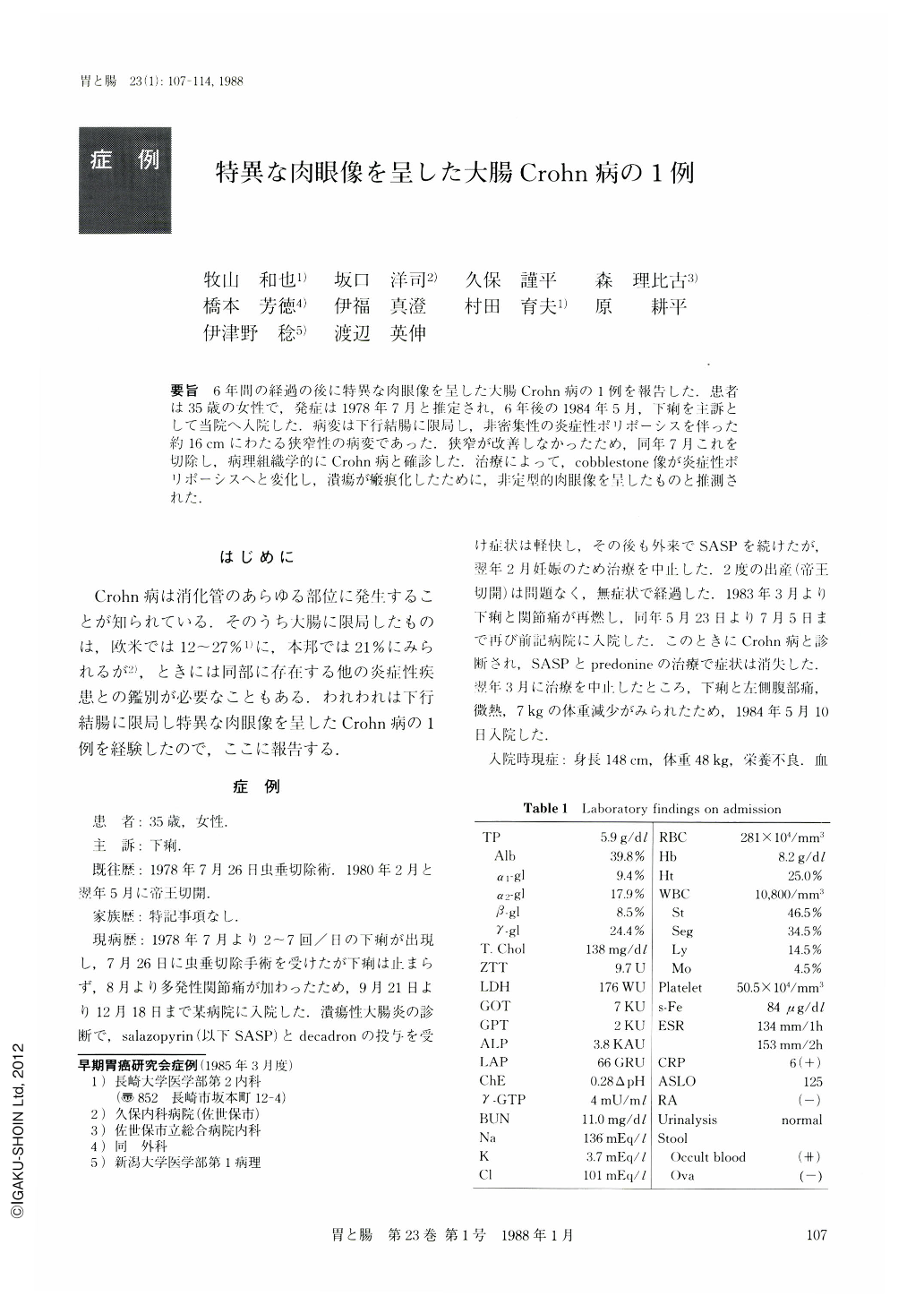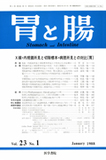Japanese
English
- 有料閲覧
- Abstract 文献概要
- 1ページ目 Look Inside
要旨 6年間の経過の後に特異な肉眼像を呈した大腸Crohn病の1例を報告した.患者は35歳の女性で,発症は1978年7月と推定され,6年後の1984年5月,下痢を主訴として当院へ人院した.病変は下行結腸に限局し,非密集性の炎症性ポリポーシスを伴った約16cmにわたる狭窄性の病変であった.狭窄が改善しなかったため,同年7月これを切除し,病理組織学的にCrohn病と確診した.治療によって,cobblestone像が炎症性ポリポーシスへと変化し,潰瘍が瘢痕化したために,非定型的肉眼像を呈したものと推測された.
A 35 year-old woman was admitted to our hospital on May 10, 1984 because of diarrhea. She had been hospitalized twice in the previous seven years because of diarrhea, which started for the first time in July, 1978. On physical examination the patient was emaciated with left abdominal tumor and a small perianal fistula (Fig. 3 a).
Findings of periodical barium enema were as follows: many small ulcers in the transverse and descending colon and a few niches in the ascending colon in Oct., 1978 (Fig. 1 a); emergence of pseudopolyps after medical treatment in Dec., 1978 (Fig. 1 b); transformation into segmental stenosis of the entire descending colon with cobblestone appearance and a few fissurings in May, 1984 (Fig. 1 c); and stenosis with inflammatory polyposis (Fig. 2 a, b) and small aphthoid lesions in the rectum (Fig. 2 c) in June 1984. The colonoscopic examination showed reddish polyps on the anal side of the stenosis (Fig. 3 b) and almost normal rectal mucosa (Fig. 3 c). After application of methylene blue to the rectal mucosa, magnifying endoscopy revealed so-called “worm-eaten” appearance (Fig. 3 d). Biopsy specimens from these lesions looked almost normal partly with some giant cells in the granulation tissue.
Since medical treatment was not effective in relieving stenosis, a partial colectomy was performed in July, 1984. Macroscopic examination of the resected specimens showed segmental stenosis of the entire descending colon with inflammatory polyps scattered in the atrophic mucosa (Fig. 4 a). Histologically, there were many non-caseating epithelioid cell granulomas throughout the entire layers, transmural inflammation composed mainly of aggregates of lymphocytes and multiple healed scars of serpiginous and longitudinal shape (Figs. 4 b and 5 a-d).
Postoperative course was uneventful, and the patient has been asymptomatic without evidence of recurrence for the following 10 months.

Copyright © 1988, Igaku-Shoin Ltd. All rights reserved.


